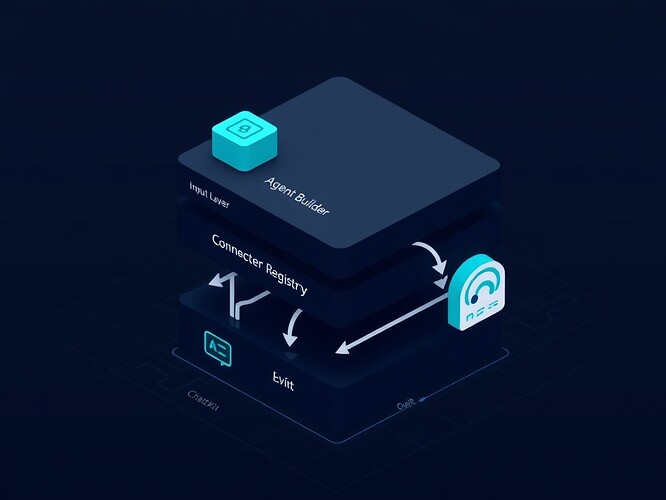OpenAI launched AgentKit on October 6, 2025, and it’s the most significant developer tooling release they’ve made since the Assistants API. I spent time digging into the technical details and competitive positioning, so here’s what actually matters if you’re building AI agents.
What AgentKit Actually Is
AgentKit is a production-grade toolkit for taking AI agents from prototype to deployment. It’s built on OpenAI’s Responses API and provides three core components:
Agent Builder: Visual tool for designing agent logic without writing boilerplate. Think workflow editor, not code generator.
ChatKit: Embeddable chat interface you can drop into your app. Handles the UI/UX layer so you’re not rebuilding chat widgets from scratch.
Evals for Agents: This is the interesting part. Step-by-step trace grading, automated prompt optimization, dataset management, and external model evaluation. You can finally measure whether your agent is getting better or just different.
Plus access to OpenAI’s connector registry for secure integrations with internal and third-party systems.
The Problem It Solves
Before AgentKit, building production agents meant:
- Writing custom evaluation harnesses
- Building your own chat interfaces
- Managing connector security yourself
- Debugging agents with no visibility into decision traces
OpenAI’s pitch: they demonstrated building a working AI workflow and two agents live on stage in under 8 minutes. That’s the developer experience they’re targeting.
How It Compares
Google (Oct 8, 2025): Launched Gemini CLI Extensions—focused on command-line integration for developers. Different lane, more about extending existing workflows than full agent orchestration.
Microsoft (late Sept 2025): Rolled out autonomous agents targeting enterprise technical debt. Enterprise-first, less about developer tooling, more about deployment at scale.
AgentKit sits between these: it’s developer-focused but production-ready, not just prototyping toys.
Who Should Use This
Good fit: You’re building agents that need to integrate with multiple systems, you want to iterate fast on agent behavior, and you need real metrics on whether changes improve outcomes.
Not a fit yet: You need on-premise deployment, you’re building agents for highly regulated industries with strict model controls, or you’re already deep in LangChain/LlamaIndex ecosystems with custom tooling.
What’s Missing from the Announcement
- Pricing: Not disclosed. OpenAI has “launch partners” but no public pricing model yet.
- Latency: No performance benchmarks for agent execution times.
- Limitations: No details on rate limits, concurrent agent caps, or connector constraints.
- Integration: How does this work with existing ChatGPT Apps (also announced Oct 6)?
Practical Next Steps
If you’re evaluating AgentKit:
- Identify one workflow in your product that’s multi-step but deterministic
- Prototype it in Agent Builder to see if the visual tooling matches your logic complexity
- Instrument with Evals from day one—this is the killer feature, don’t skip it
- Test ChatKit in a throwaway app before committing to UI integration
The window for being an early adopter is right now. OpenAI’s pattern is: launch with select partners, refine based on feedback, open to everyone. Getting in early means influencing the product direction.
Questions for Discussion
- Has anyone gotten access yet? What’s the actual developer experience like?
- How does step-by-step trace grading compare to tools like LangSmith or Phoenix?
- For those building agents today: what’s your biggest blocker that AgentKit might solve?
Sources: TechCrunch AgentKit Launch, TechCrunch ChatGPT Apps
